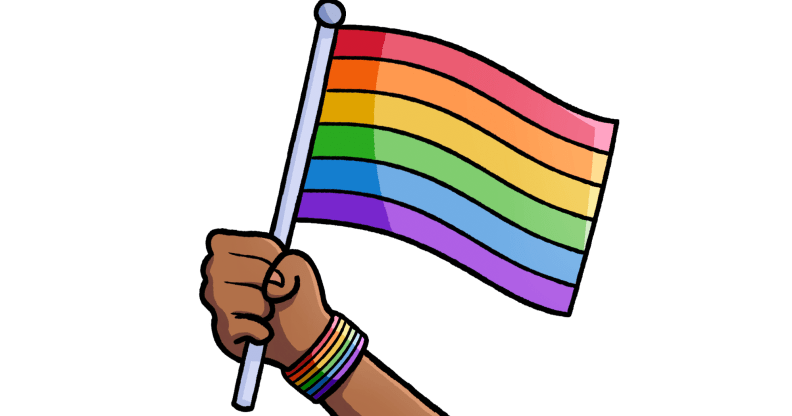Comment: Gay and lesbian identity is doomed

Gay activist Peter Tatchell calls for an end to the gay-straight divide
This month has been Queer Awareness Month at many universities across Britain, with four weeks of stalls, debates and films to promote queer human rights.
Given that homophobia still exists, we need to challenge prejudice and defend our right to be gay. But in the long-term, lesbian and gay identity is doomed. And a good thing too.
Like every other expression of human culture, homosexual and heterosexual identities are historically transient. They haven’t always existed, and they won’t last forever. Indeed, the weakening, blurring and eventual dissolution of the labels queer and straight
will be final proof of the demise of homophobia.
When I made this point in a recent university debate, I was greeted by howls of protest from some lesbians and gays in the audience: “Mr Tatchell, you are obviously suffering from internalised homophobia,” said one. Another interjected: “You are playing into the
hands of homophobes.”
Well, no. I was trying to express a truth that some gay people find disconcerting: while same-sex behaviour has existed since the beginning of human evolution, defining oneself as gay is a relatively modern invention and is unlikely to prevail in perpetuity.
Homosexuality and homophobia exist in a cultural context, as do heterosexuality and heterophobia. Culture is man-made, not biologically given. It evolves and changes.
Historical and anthropological research shows that same-sex behaviour has occurred in all cultures at all times – but in different manifestations. Homosexuality in pre-colonial African and Asian societies was very different from its counterparts in Ancient Greece, Confucian China, Tudor England and twenty-first century Western Europe.
Clellan Ford and Frank Beach’s classic anthropological survey, Patterns of Sexual Behaviour (1952), documented the huge diversity of same-sex relations in dozens of tribal societies on every continent. They debunked, once and for all, the myth that homosexuality was a European phenomenon and a state of desire that was universally the
same.
They also demonstrated that most non-western cultures seem to have accepted, and sometimes even venerated and ritualised, same-sexers. In many Native American tribes, for example, this sexual difference was deemed to be evocative of spiritual and supernatural powers. The prestigious role of tribal shaman was often reserved for these “sexual others.”
Modern western expressions of gay identity, behaviour and subculture only began emerging a mere three centuries ago in the European cities of Amsterdam, London, Florence and Paris.
Up until this time, there was only same-sex behaviour, not same-sex people. Contemporary gay identity – the definition of oneself as gay – did not previously exist. According to the mediaeval Church, the “abominable vice” of sodomy was not the sin of a specific class of people, but an “evil temptation” to which anyone could succumb.
Prior to the 1700s, there was no gay social milieu. Then came the bawdy private parties held in the “molly houses” of eighteenth century London. These were forerunners of modern gay bars. Long before Hampstead Heath, there was the gay cruising ground in the gardens adjacent to Buckingham Palace. This is how the “gay scene”, as we now
call it, began.
History shows us that same-sexuality was, and is, an evolving cultural phenomenon. The idea that queers are a distinct class of people and are fundamentally different from straights is historically very recent; originating primarily from the normative theories of late nineteenth century psychology. Indeed, the word homosexual was only coined in the 1860s. Before then, no such term existed.
This would seem to suggest that just as the contemporary configurations of gay identity came into being at a certain moment in social development, one day, if social conditions change, they will also fade away. So will heterosexual identity, as we currently
understand it.
The labels gay and straight are cultural inventions, primarily devised to police sexual desire. By labelling same-sexers as a distinct group of people, society marks them out as “different” and “other”. This has functioned as a way to identify, marginalise and control the queer “menace.”
In a future, more enlightened epoch, homophobia will be vanquished. Anti-gay attitudes will be deemed as ridiculous as flat-earth theories and opposition to votes for women. In this cultural context, the differences between hetero and homo will lose their significance.
In the absence of straight supremacism and privilege, the need (and desire) to differentiate between the two sexual orientations will decline and become irrelevant. No one will care who is gay or heterosexual. It won’t matter any more. People will be accepted, whoever they love.
In this non-homophobic society, the present separate, exclusive sexualities of straight and queer are likely to be eventually supplanted by a more inclusive, polymorphous sexuality.
The boundaries between hetero and homo will merge and blur, with a greater incidence
of bisexuality.
Once one form of sexuality is no longer valued over another, more men and women will be inclined to experience both opposite-sex and same-sex relationships (perhaps not for their entire lives, but certainly for significant periods). Most people will stop defining
themselves as straight or gay, and the gender of a person’s sexual partner will cease to determine the social validity (or illegitimacy) of their carnal and affectional feelings.
This demise of sexuality categorisation and value judgement destroys the social basis for homophobia. Without differentiation and polarity, there can be no conflict and prejudice. The dissolution of rigid hetero and homo orientations and identities is thus both the
precondition for, and the proof of, queer emancipation.
This article first appeared on the Guardian Comment is Free page

